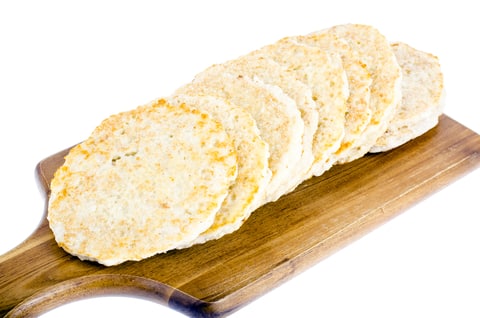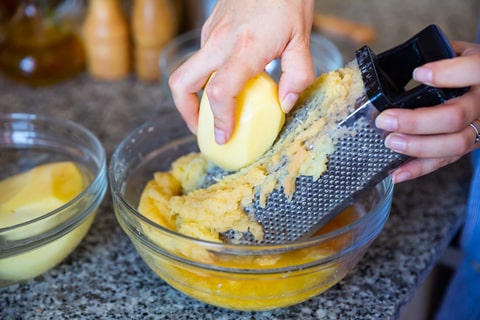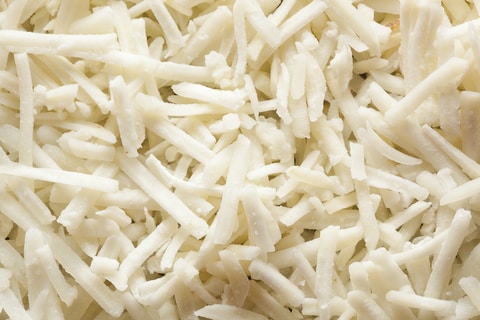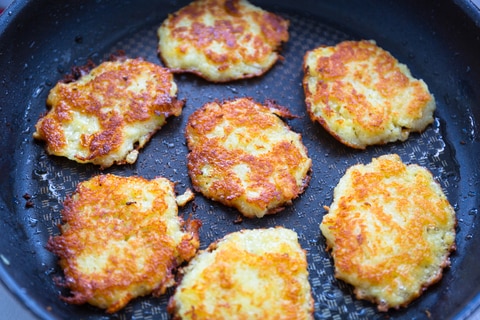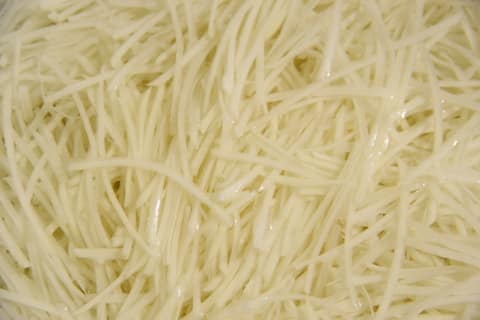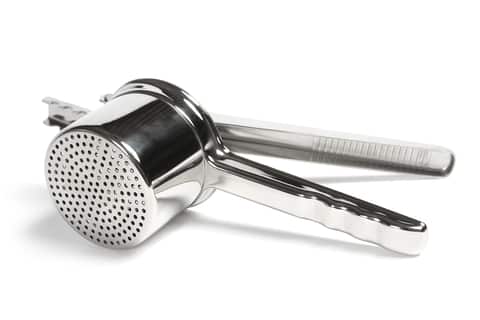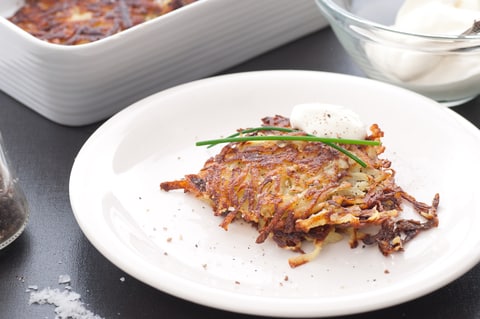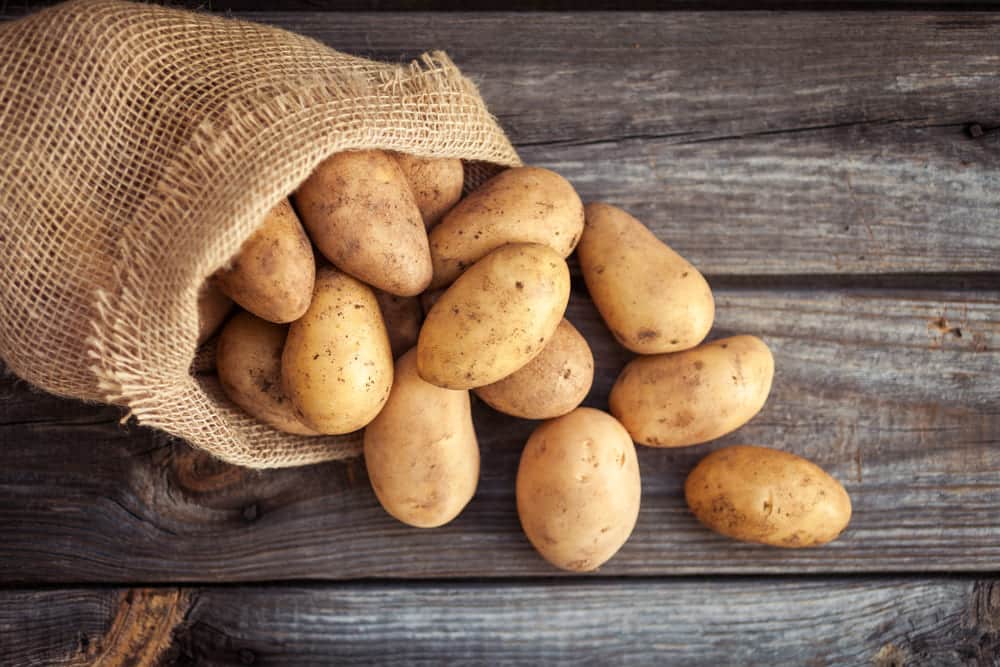
Hash brown is a delicious snack that can be eaten as is or added to popular family-sized meals like casseroles. These crispy treats are made with shredded potatoes. The store-bought version of hash browns is often preferred over homemade.
These are used as food staples containing a lot of nutrition. Hash brown is a kind of mass-produced product. It is usually available in frozen forms in stores.
Hash browns are cheap, so it is an efficient way to get in calories from them. Potatoes are the main ingredient in hash browns.
They are also a great source of nutrients such as copper, potassium, vitamin C, manganese, dietary fibers, phosphorus, pantothenic acid, vitamin B6, etc.
Fibers in hash browns help to keep cholesterol and blood sugar levels in check when eaten in a balanced diet. The appropriate level of cholesterol and blood sugar can help in preventing heart diseases.
Antioxidants in potatoes are useful for preventing diseases. Lastly, the presence of vitamins in hash browns assists in the proper functioning of the body.
Substitute Fresh Potatoes For Frozen Hash Browns
You might face a situation where you do not have hash browns at home. So, what to do if you don’t have frozen hash brown? Can you substitute fresh potatoes for frozen hash browns?
Well, the answer is yes, you can use fresh potatoes instead of frozen or store-bought hash browns.
However, you’ll need to shred the potatoes and make quick homemade hash browns with some spices. You can’t simply substitute hash browns with plain shredded potato.
How To Make Homemade Hash Browns
If you haven’t made hash browns before and need a recipe, we’ve got your back. Follow our simple 5-step method of making hash browns at home and get the best results in your dishes.
Step 1- Gather Ingredients.
Before you begin shredding the potatoes and making hash brown patties, it’s important to take out all your necessary ingredients. For this recipe, you’ll need:
- 2 medium-sized potatoes. Peel them and shred them carefully.
- ½ medium-sized onion, chopped finely.
- 1 egg, beaten.
- ¼ cup of all-purpose white flour.
- 1 cup vegetable or olive oil for frying (or as needed). You can substitute it with butter.
- Salt and pepper to taste.
- Chili powder to taste (optional).
Step 2- Mixing
Once done shredding, rinse the potatoes till the water runs clear. You can use a colander for this. After washing, drain and squeeze dry with a muslin cloth or cheesecloth.
Now place the shred in a large bowl, adding the flour, egg, and onion. Mix these together until they’re evenly distributed, then add your seasonings. Once done, make hash brown patties (for easier frying and storage).
Step 3- Oiling The Pan
In a skillet or frying pan, heat about ¼ inch of oil over medium-high heat for a couple of seconds. If you’re using butter, avoid burning it. A pro tip is to add a small amount of oil to the butter– this prevents quick browning of the fat.
Once the oil is sizzling hot, place your hash brown cakes. Make sure they’re no thicker than ½ inch. You can also cover the entire bottom of your pan instead of making small hash browns and piling them like pancakes.
Step 4- Frying
Once you see the hash browns becoming nice and brown on the bottom, flip them over to the other side. Avoid flipping back and forth.
Frying hash browns typically takes around 5 minutes per side. You can cut the hash brown into quarters if you’re covering the whole skillet (like how you make a galette).
Step 5- Seasoning
Once fried, remove from the pan and place on paper towels. Blot the excess oil away. Season with grounded pepper and some flaky salt if you didn’t use seasonings before and serve hot.
Hash Brown-Making Tips
For the best homemade hash brown results, you can follow some extra tips along with our tried and tested recipe.
First up, always use fresh potatoes. Make sure the potatoes aren’t soft or squishy and don’t have buds growing from them.
Another tip is to soak the shredded potatoes for a while in icy cold water. Doing this prevents the quick browning of raw potatoes and helps effectively remove starch. You can skip it if you’re in a rush though.
When washing the potatoes, try using cold water as well because this removes starch better. Removing starch gives better flavor, more crispiness, and reduces stickiness.
Once you’re done rinsing, don’t forget to string the water out and dry well. A potato ricer can work well in this regard.
The frozen hash brown is not simply a shredded potato, but they are cooked a little bit before freezing, so lightly fry them before storing them.
The moisture in hash browns reduces by freezing. Freezing results in breaking the interior structure of potatoes due to the formation of ice crystals. While cooking the remaining moisture converts to steam.
This creates a crisp on the outer surface of hash brown. So, the use of fresh potatoes may contain moisture, and the crispiness of the recipe might get affected.
Hence, if you want to substitute fresh potatoes for frozen hash browns then you must perform some additional steps i.e., you have to par-cook the potatoes, make shreds and dry the shreds before using.
You can use these hash browns made from fresh potatoes in your recipes and they will taste relatively similar. The nutritional benefits of both are similar as hash browns patties contain potato as its integral ingredient.
Hence the use of either hash brown or fresh potato will provide you with similar health benefits. You can also enjoy the homemade fresh potato hash browns in place of frozen ones with a dollop of sour cream or some sharp cheddar.
In short, if you’re out of hash browns, you can make some in 20-30 minutes from fresh potatoes, and these provide the same flavor and crispy texture we know and love.
FAQs
What Potatoes Are Best For Hash Browns?
This is a common question. Though it’s true that some potato varieties are better than others when it comes to making hash browns, if you’re in a rush, you can use any variety of potatoes you have on hand.
This is, as long as you properly rinse off the starch and strain the shredded potato.
Onto the answer, there are two main kinds of potatoes- waxy and mealy. Waxy potatoes are dense and moist and become sticky when cooked, so they’re ideal for potato cakes and mashed potatoes. An example is Yukon gold.
On the contrary, mealy potatoes have a higher starch content and contain less water, so they easily become dry and fluffy on cooking. They’re the perfect option for French fries. Examples include fingerlings and russet potatoes.
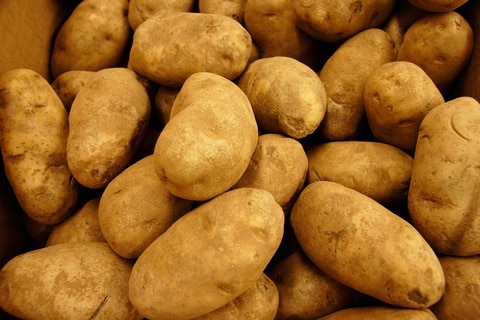
Now, if you want more sticky potatoes for hash browns used in casseroles, go with waxy potatoes. If you want crispier hash browns that can be fried and eaten as snacks, grab the starchy ones.
Just remember, avoid flipping mealy potatoes in the pan in a larger size as they tend to break apart.
Why Are My Hash Browns Not Crispy?
If your hash browns don’t turn out as crispy or have a gray color, then the likely issue is excessive moisture.
If you don’t string out all the water, don’t try the shreds with a towel, or use frozen homemade hash browns that weren’t cooked a little before being stored in the freezer, then there will be more water content.
The water will create steam and release additional potato starch that makes the hash brown gummy.
In addition to this, frying a thick hash brown can also prevent crispiness. Don’t throw too many freshly shredded potatoes in the pan- take your time and cook in batches.
